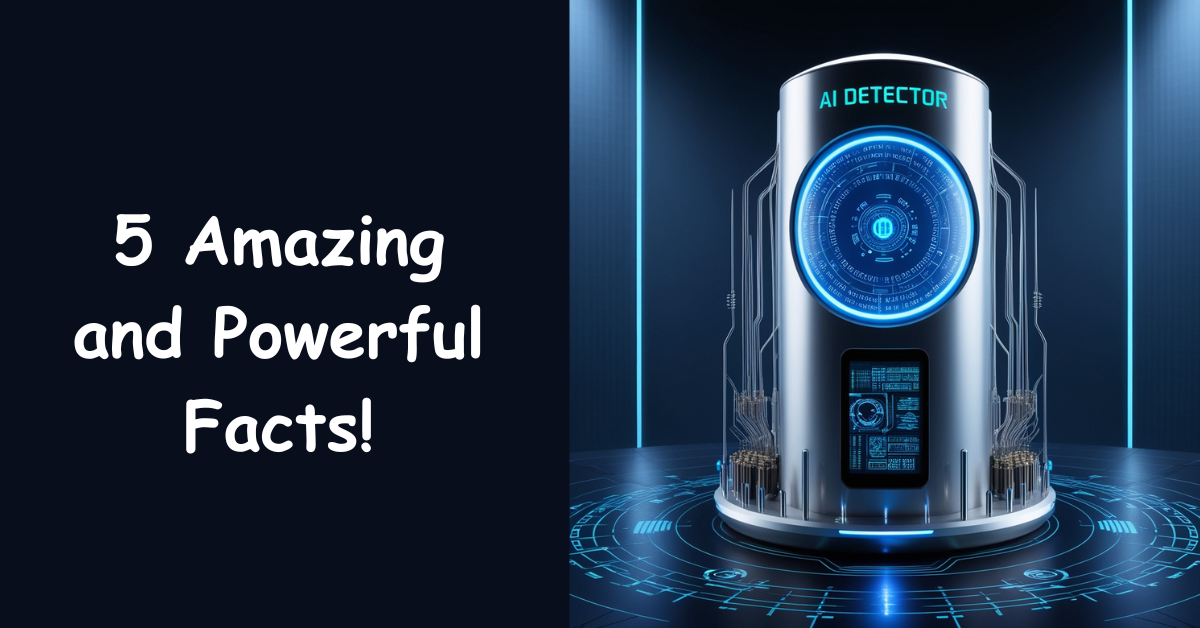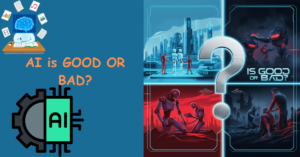Examining the Reliability of AI Detection Systems
Are AI Indicators Exact? Inspecting the Dependability of AI Discovery Frameworks with the ascent of man-made consciousness (AI) in satisfied creation, correspondence, and different ventures, there’s a developing need to identify and confirm simulated intelligence produced content. AI locators are intended to decide whether something — whether text, picture, or video — was made by an artificial intelligence calculation or a human. These devices have become fundamental in schooling, reporting, and web-based entertainment, where the capacity to confirm the legitimacy of content has sweeping ramifications. Be that as it may, how exact are AI locators, truly? This article investigates the functions of AI locators, factors that influence their exactness, and the difficulties they face in reality as we know it where AI is advancing quickly.
Table of Contents
1:Introduction to AI Detection
2:How Do AI Indicators Work?
3:Key Types of AI Detectors
- Text-Based AI Detection
- Image and Video AI Detection
- Speech and Audio AI Detection
4:Factors That Affect the Accuracy of AI Detectors
- Quality of AI Training Data
- Complexity of AI Models
- Continuous AI Advancements
5:Common Difficulties in AI Recognition
6:Real-World Applications of AI Detection
7:The Debate: Are AI Detectors Truly Reliable?
8:Improving AI Detection Technology
9:Conclusion: The Future of AI Detection
10:Frequently Asked Questions

1:Introduction to AI Detection
As artificial intelligence frameworks create a rising measure of content, artificial intelligence identifiers plan to confirm the beginning of that substance. From distinguishing counterfeiting to guaranteeing editorial trustworthiness, the capacity to decide whether content was artificial intelligence based intelligence or a human is basic. Yet, as computer based intelligence turns out to be more refined, identifying its presence turns into a perplexing test, pushing artificial intelligence finders to stay up with developing innovations.
2:How Do AI Indicators Work?
AI finds capability by investigating examples, designs, and qualities that might demonstrate whether a piece of content was created by a computer based intelligence. AI produced content frequently shows specific indications, such as steady grammar structures, absence of perplexing subtleties, or even moment irregularities that human makers wouldn’t make. Utilizing calculations prepared to recognize these examples, AI finders expect to recognize human-produced and AI created content.
AI identifiers regularly utilize AI (ML) models, normal language handling (NLP), and brain organizations. These calculations “learn” to perceive designs by handling tremendous datasets of both AI produced and human-made content.Once trained, the AI detector applies its knowledge to new data, identifying the probability of AI involvement in content creation.
3:Key Types of AI Detectors
AI detection covers various media forms, each with unique challenges and methods.
- Text-Based AI Detection
Text-based AI identifiers are utilized to assess composed content, like expositions, articles, and virtual entertainment posts, to decide if they were made by a computer based intelligence language model. These finders break down factors like sentence structure, jargon assortment, and point consistency. Famous instruments incorporate AI produced text classifiers, which assess the probability that a piece of text was made by AI.
- Image and Video AI Detection
With the ascent of AI produced pictures and deepfake recordings, devices for identifying AI in visual substance are essential. Picture locators search for unnatural surfaces, lighting irregularities, or moment pixel designs that deceive AI control.Video detectors focus on signs like facial movement inconsistencies and artifacts in video quality, which are often present in AI-generated or altered videos.
- Speech and Audio AI Detection
AI can also generate audio, producing voice overs or altering real voices. Speech-based AI detectors analyze audio for signs of robotic tone, pitch anomalies, and pauses that may indicate non-human generation. This innovation is particularly applicable in recognizing manufactured voices, frequently utilized in tricks or advanced pantomime.
4:Factors That Affect the Accuracy of AI Detectors
Several factors influence how accurately AI detectors can identify AI-generated content. Let’s explore some of the major elements that determine the reliability of these detection systems.
- Quality of AI Training Data
The accuracy of an AI detector largely depends on the quality and diversity of its training data. Detectors need extensive datasets that cover various types of human and AI-generated content to recognize patterns effectively. If the training data is limited, the detector’s accuracy can suffer, leading to either false positives (human content flagged as AI) or false negatives (AI content labeled as human).
- Complexity of AI Models
Refined artificial intelligence models, similar to OpenAI’s GPT-4 or DALL-E, make content that is profoundly nuanced and intently mirrors human composition or visuals. The more intricate the artificial intelligence model, the harder it is for locators to recognize artificial intelligence produced content from human-made content.This complexity challenges detectors to evolve alongside the advancements in AI content generation.
- Continuous AI Advancements
As artificial intelligence innovation improves, its capacity to imitate human-like qualities turns out to be really persuasive. For example, more current AI models can create happiness with close to home profundity, different jargon, and even humor, making it progressively hard for indicators to distinguish them.This rapid evolution requires AI detectors to adapt constantly, incorporating new patterns and learning from updated datasets.
5:Common Difficulties in AI Recognition
In spite of headways in AI identification innovation, there are as yet numerous snags to defeat to accomplish high exactness.
- Bogus Up-sides and Negatives
AI locators in some cases banner human-made content as AI produced or neglect to recognize artificial intelligence created content accurately. These errors can prompt issues in fields like the scholarly world, news-casting, and lawful cycles, where exact recognition is basic.
- Adaptability to New AI Models
Each time another AI model is delivered, finders should be retrained to perceive its remarkable attributes. Staying aware of these headways is a test, as new AI models can impersonate human substance with expanding authenticity.
- Lack of Universal Standards
AI location innovation is still in its beginning phases, and there are no general benchmarks or guidelines for precision. This absence of normalization implies that various identifiers might yield differing results for similar substances, influencing the unwavering quality of AI recognition across stages.
6:Real-World Applications of AI Detection
AI detectors are employed in various fields where it’s important to verify the authenticity of content.
- Education and Academia
In scholarly settings, AI locators are utilized to forestall literary theft and recognize tasks that might have been finished by artificial intelligence, guaranteeing that understudies produce unique work.
- Journalism and Media
Identifying AI created news and phony reports is fundamental to keeping up with editorial honesty. Artificial intelligence indicators assist news sources with confirming the legitimacy of data, decreasing the gamble of spreading falsehood.
- Social Media and Content Moderation
AI detection is also applied in social media to identify deepfakes and misleading content. By spotting AI-altered images or videos, platforms can address potential harms caused by misinformation or impersonation.
7:The Debate: Are AI Detectors Truly Reliable?
The accuracy of AI detectors has been widely debated.While numerous AI identifiers offer promising outcomes, they are not secure. Precision rates can shift in light of the sort of satisfaction, the complexity of the AI utilized, and the nature of the locator. Pundits contend that artificial intelligence indicators are as yet restricted and inclined to blunders, while defenders accept that continuous progressions will further develop dependability.
1. Limitations of Current AI Detectors
AI detectors are often less effective with content from advanced AI models that closely replicate human traits. Additionally, detectors might struggle with diverse writing styles or creative expressions, sometimes incorrectly flagging human-created content as AI-generated. These limitations raise questions about their readiness for high-stakes applications.
Improvements in AI Detection
Despite these limitations, AI detection technology is advancing. Researchers are developing more adaptive models, creating detectors that can recognize more nuanced aspects of AI-generated content. However, ongoing research is needed to keep detectors up-to-date and capable of handling emerging AI models.
8:Improving AI Detection Technology
- Expanding Training Datasets
Broader datasets allow detectors to better recognize the subtle characteristics of both AI and human content, reducing errors. - Cross-Platform Standards
Establishing universal benchmarks for AI detection could improve consistency and accuracy across different platforms, creating more reliable detection results. - Integration of Multi-Model Detection
Combining multiple detection techniques, such as pattern analysis, syntax review, and emotional tone detection, can help detectors identify AI content with greater precision.
9:Conclusion: The Future of AI Detection
As AI innovation keeps on advancing, the requirement for precise AI discovery turns out to be much more basic.AI identifiers assume a critical part in checking content genuineness, yet their dependability stays a subject of discussion. As progressions in AI age and discovery proceed, there is trust that artificial intelligence locators will turn out to be progressively precise. In any case, accomplishing reliably high precision will require continuous examination, versatile innovation, and maybe, general guidelines that permit AI discovery to stay aware of the quick speed of AI advancement.
10:Frequently Asked Questions
AI detectors are improving, but they are not flawless. They may sometimes flag human content as AI-generated and vice versa, especially when dealing with sophisticated AI models.
AI image detectors look for signs like unnatural textures, lighting issues, or irregular pixel patterns that indicate manipulation by AI.
Currently, there are no universal standards for AI detection accuracy, leading to variations in results across different tools.
Training data is essential for AI detectors, as it helps them learn patterns specific to human and AI-generated content. High-quality, diverse data improves detection accuracy.
Yes, as technology and training methods improve, AI detectors are expected to become more accurate, although they will need to adapt continually to new AI models.




